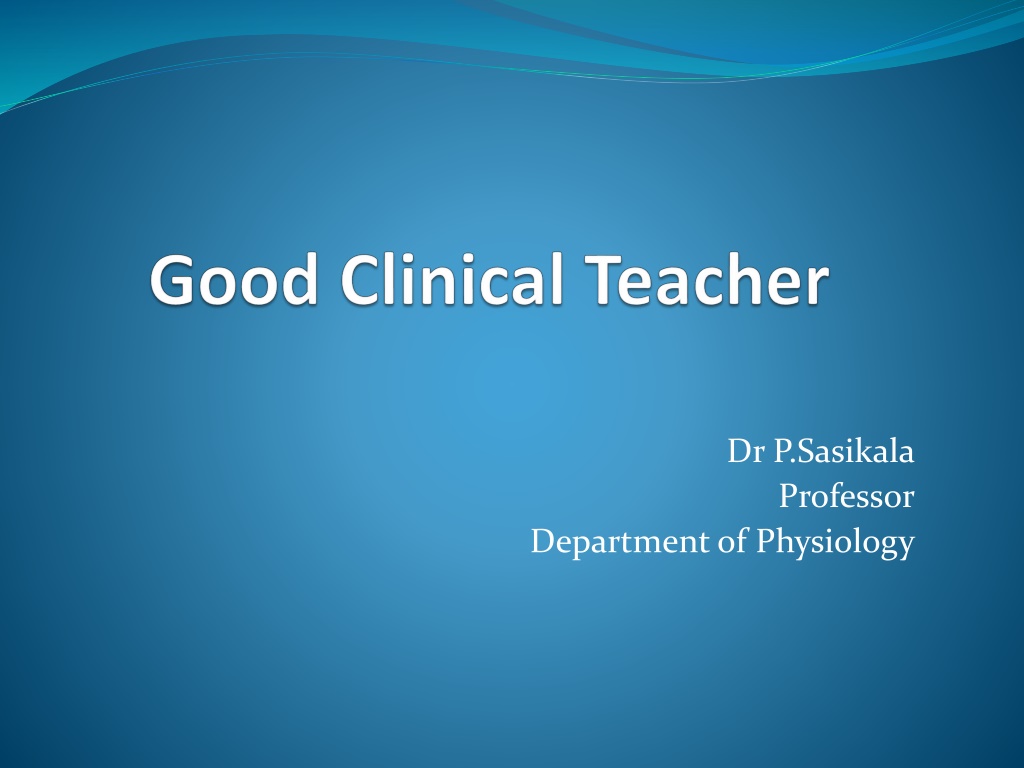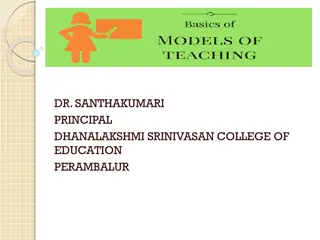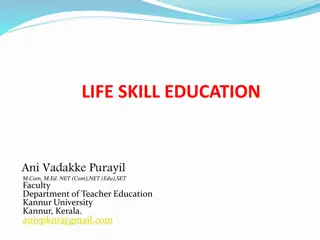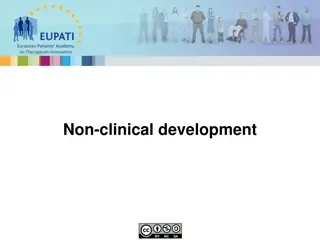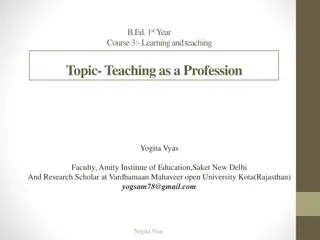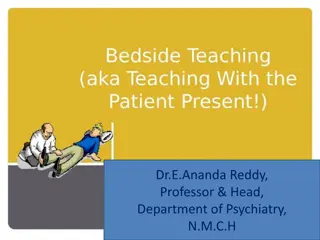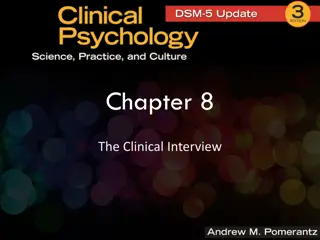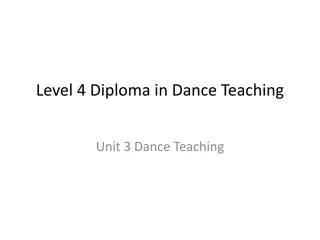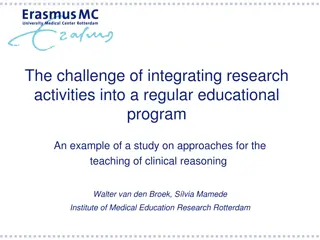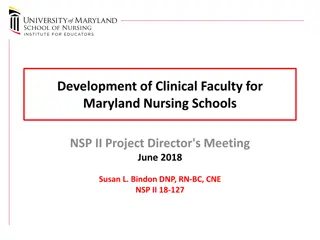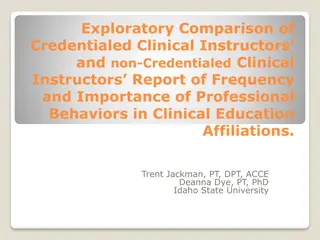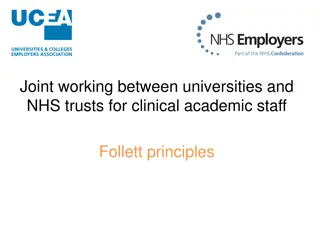Enhancing Clinical Teaching Skills: A Comprehensive Guide
Explore the key elements of being a good clinical teacher and student, including roles, qualities, challenges, and effective mentoring strategies. Learn how to cultivate enthusiasm, knowledge, and communication skills in clinical education for a successful learning experience.
Download Presentation

Please find below an Image/Link to download the presentation.
The content on the website is provided AS IS for your information and personal use only. It may not be sold, licensed, or shared on other websites without obtaining consent from the author.If you encounter any issues during the download, it is possible that the publisher has removed the file from their server.
You are allowed to download the files provided on this website for personal or commercial use, subject to the condition that they are used lawfully. All files are the property of their respective owners.
The content on the website is provided AS IS for your information and personal use only. It may not be sold, licensed, or shared on other websites without obtaining consent from the author.
E N D
Presentation Transcript
Dr P.Sasikala Professor Department of Physiology
Specific learning objectives By the end of this presentation, all the participants of Value based course should be able to: Describe a good clinical teacher Roles of a good clinical teacher Good clinical teacher as a Mentor and Role model What students value in Clinical Teaching Challenges in Clinical teaching Different ways to mould ourselves into Good Clinical teacher
Good clinical teacher Whom do we call a good clinical student??
Good clinical student Enthusiastic Motivated Proactive in learning Regular to wards Confident knowledgeable Competent in basic clinical skills Fluent in medical terminology Communicate effectively Genuine when interacting with patients.
Good clinical teacher Good clinical teachers are knowledgeable, committed, enthusiastic, genuine and skilled communicators with good teaching skills A teacher s enthusiasm and non-cognitive abilities are as important as their cognitive abilities
Good clinical teacher Excellent clinical teaching, although multi-factorial is characterized by inspiring, supporting, actively involving, and communicating with students
Mentor Mentoring is a relationship between two people with the goal of professional and personal development. The "mentor" is usually an experienced individual who shares knowledge, experience, and advice The mentee is less experienced person who receives knowledge , experience, and advice
3 As for successful mentoring Acceptability Availability Active listening
3Cs for successful mentoring Consultant Counselor Cheer leader
Good clinical teacher Mentorship is never a judgement It is a form of live helpline for the students
Role model A role model is someone we admire and someone we aspire to be like. ... We learn through them, through their commitment to excellence and through their ability to make us realize our own personal growth. We look to them for advice and guidance.
What do students value? Enthusiasm Positive attitude towards teaching Rapport with students and patients Availability and accessibility Clinical competence Subject matter expertise (Irby, 1994)
Good clinical teacher Teaching skills Knowledge of teaching & learning Values, attitudes, behaviours
I said I taught him I didn t say he learned! I ve taught Spot to whistle! I can t hear anything
Chinese proverb Tell me and I forget Show me and I remember Involve me and I understand
Challenges in clinical teaching Time constraints Work demands teachers maintain other clinical, research or administrative responsibilities while being called upon to teach Often unpredictable and difficult to prepare for . Engaging multiple levels of learners (students, house officers etc) Patient related challenges: short hospital stays; patients too sick or unwilling to participate in a teaching encounter Lack of incentives and rewards for teaching
Good clinical teacher Clinicians do not become Good clinical teachers by virtue of their medical expertise
Good clinical teacher Outcome based approach to teaching Soliciting feedback on teaching Reflective practice Staff development Programmes
